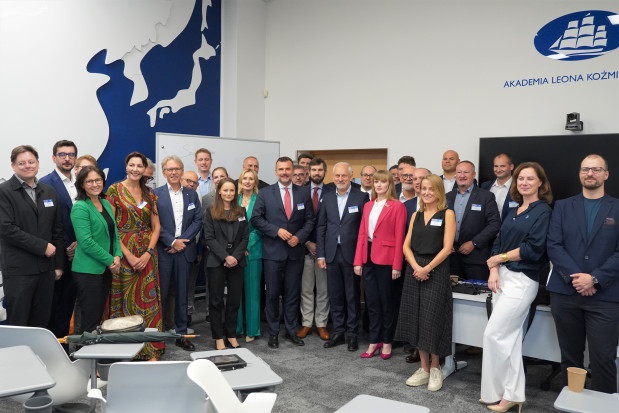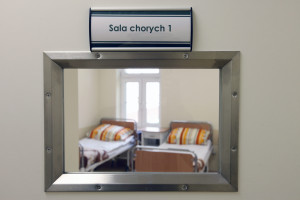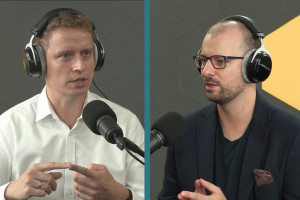Fast Track to e-Health: AOTMiT Report Released Following Health Market Debate

- AOTMiT has launched consultations on a report on financing modern medical devices. The document includes three proposed paths for introducing innovation into the system.
- The agency identified existing loopholes in the law, lack of transparent procedures and barriers that make it difficult for producers to access reimbursement.
- The solutions were inspired by models from Germany and France, among others.
- The goal is to improve patient safety and increase access to modern technologies.
Comments on the report "Public Financing of Innovative Medical Devices – Assessment and Directions for Change," prepared by the Agency for Health Technology Assessment and Tariff System (AOTMiT), can be submitted until August 18th. Please use the form available on the Agency's website.
This document is the result of a debate organized last September by the editorial team of Rynek Zdrowia, the Physician Innovators Network of the Supreme Medical Chamber, and the Leon Kozminski University. At that time, we initiated a conversation with decision-makers about creating mechanisms to increase the adoption of innovative medical devices into the Polish healthcare system.
Prof. Anna Kowalczuk, Deputy President of AOTMiT, announcing the start of the report consultation on social media, admitted that our debate inspired the Agency to take action.
- Together with the AOTMiT team, in close cooperation with experts and industry representatives, we have developed a draft legislative model – a path for assessing and including innovative medical devices in the list of guaranteed services - added Prof. Kowalczuk.
She explained that the document contains an analysis of key challenges and opportunities, as well as legislative scenarios, varying in terms of feasibility and degree of integration with the current system.

The report states that there is a need to provide patients with access to safe, effective and innovative medical devices financed from public funds.
Although mechanisms exist to reimburse some or all of the costs of medical devices, their availability remains limited due to, among other things, legislative inconsistencies, a lack of transparent procedures, and barriers preventing manufacturers from applying for reimbursement for innovative products. Modern devices also tend to lack the sufficient quality of available clinical evidence.
The aim of the AOTMiT analysis is to develop possible scenarios for the legislative path regarding the assessment and inclusion of innovative medical devices (including digital ones) in the list of guaranteed services - based on identified evidence and preliminary consultations with the Ministry of Health.
Among the inspirations, solutions operating in other countries were mentioned: Germany (DiGA, NUB), France (Forfait Innovation, PECAN), the United States (Breakthrough Devices Program) and the United Kingdom (Innovative Medicines Fund, Innovation Device Access Pathway, MTFM).
The agency noted that clinical evaluation of medical devices is a key element of marketing authorization, monitoring their efficacy and safety, and qualifying them for reimbursement. Due to the wide variety of these products, this process requires a tailored approach that takes into account the specific nature of the technology and its clinical application.
The report proposes three paths for implementing innovations in the Polish healthcare system. We briefly describe them below:
The manufacturer or another authorized entity (e.g., the National Health Fund, national consultants, national scientific societies) would submit an application to the Ministry of Health. The Ministry would select projects for pilot programs, during which data on the product's effectiveness and cost-effectiveness would be collected. The Ministry would then decide whether the product would be included in the public financing system.
- Scenario II - full assessment and negotiations
The manufacturer or a national consultant (depending on the chosen option) would submit an application to the Ministry of Health with the results of research on the product's effectiveness. A team of specialists would evaluate its innovativeness and health benefits. If the evaluation is positive, the product would be partially funded, and the manufacturer would collect additional data on its effects and safety. After the trial period, a re-evaluation would take place, and a decision on permanent funding would be made.
- Scenario III - additional for poorly tested products
The manufacturer would submit an application to the Ministry of Health, including a description of the technology, a clinical trial plan, and preliminary data (if available). Institutions under the Ministry's jurisdiction (including the Medical Research Agency) would evaluate the plan for innovation, safety, and potential clinical value. The trials would be financed by the manufacturer, but the device could be included in the system for a trial period (maximum 24 months) under certain conditions. After completing the trial, the manufacturer would submit a trial report to the Agency for the Treatment of Diseases and Therapies (AOTMiT), which would prepare a clinical and economic analysis for the Ministry of Health.
Write to the author: [email protected]
Copyrighted material - reprint rules are specified in the regulations .
rynekzdrowia












